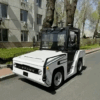In the rapidly heating up humanoid robot competition, a phenomenon that is particularly worthy of attention is that a group of robot companies that originally focused on vertical scenarios such as cleaning, distribution, and security are accelerating their shift to the field of humanoid robots.
According to data from the New Strategy Robot Industry Research Institute, as of June 2025, there will be more than 300 humanoid robot companies in the world, and Chinese companies account for nearly half of the market. It is worth noting that among these companies, 42% are start-ups, 11% are cross-border companies, and 38% are professional robot companies, many of which are from the service and special robot fields.

Figure: Analysis of the competitive landscape of the humanoid robot market
Compared with cross-border companies that started from “0 to 1”, these service and special robot manufacturers have clear scenario orientation, stable product delivery capabilities, and long-term accumulated software and hardware collaboration experience, and are becoming an important force in promoting the implementation of humanoid robots.
Typical examples include well-known robot companies such as Ecovacs, Irobint, Pudu Robotics, Keenon, and Yijiahe. They are extending the technical capabilities accumulated over many years in the fields of park logistics, terminal delivery, commercial cleaning, etc. to the humanoid robot platform, trying to run customized and feasible new products in familiar scenarios.
“Humanoid” is a product upgrade, but also a valuation chip
These robot companies are flocking into humanoid robots, not just on impulse. There is both the inherent logic of technological evolution and realistic considerations at the market and capital level behind them.
First of all, from the perspective of technology and products, these companies have actually been dealing with “embodied intelligence” for a long time. Common scenarios such as cleaning, delivery, guidance, and security require high capabilities such as robot navigation, perception, obstacle avoidance, and interaction, which are exactly the underlying capabilities needed by humanoid robots. The only difference is that they used wheels before, but now they have added two “legs” and a pair of “hands”.
For them, this is not about creating a new track, but about creating a new form that can better adapt to complex environments in familiar scenarios, which is a natural extension of product capabilities.
Secondly, these companies have experience from prototypes to mass production, know how to bring a robot from the laboratory to real scenarios, and know what customers care about.
In today’s stage where the humanoid robot industry is gradually moving from technology display to scene verification, service robot companies may be more stable. They can use familiar applications to test new forms, such as in medium- and low-speed, controllable environments such as park logistics, supermarket reception, and public security, to first do some “small and beautiful” humanoid landing projects, accumulate experience, and gradually open up the situation.
For example, Pudu Tech, Keenon and other companies are trying to apply humanoid robots to home services and commercial spaces, explore “smarter next-generation terminals”, and use new forms to take over old scenarios. The common point of these companies is that they do not create “humanoid robots” from scratch, but build “shapes” in existing scenarios, so as to achieve the parallel advancement of form evolution and commercial landing.
Of course, there is another motivation that cannot be ignored: valuation and imagination space. In recent years, the competition in the service robot industry has been fierce. Although the commercialization path has been run through, the growth space and valuation ceiling have become increasingly clear. In this context, humanoid robots, as the “next generation of intelligent terminals”, have become a “new story” in the eyes of the capital market.
According to statistics from the New Strategy Robot Industry Research Institute, there were more than 35 financing events in the field of humanoid robots in the world in the first quarter of 2025, with a total financing amount of more than 8 billion yuan. In the second quarter of 2025, the financing enthusiasm in the field of humanoid robots is still rising, with more than 9 financing events in the field of humanoid robots last week alone. It can be seen that capital continues to pursue the field of humanoid robots.

Figure: Annual changes in financing in the field of humanoid robots
Therefore, many robot companies do hope to reshape their corporate positioning, boost market confidence, and increase market value/valuation levels through the new direction of “humanoid” while talking about technology upgrades. Technology is one aspect, and narrative is also a competitive advantage.
For many robot companies, turning to humanoid robots is not only an upgrade of product form, but also an attempt to “turn a new page.” If you succeed, it will be a new track; if you fail, at least there will be another future direction.
Are “family” and “service” scenarios the next future?
Among the service robot companies that have flocked to the humanoid robot track, many leading players have begun to take their own routes. Some emphasize the system integration capabilities of hardware and software, and others focus on building embodied intelligent platforms. In terms of scenario applications, many companies have targeted the “family service” and “health care and medical” scenarios.
Irobint – Three major sectors resonate, focusing on family elderly care scenarios.
In recent years, Irobint has formed a service robot product matrix covering commercial cleaning, intelligent reception, distribution, hospital transportation, family health management and other fields. It is based on the understanding and practice of such medium- and low-speed, structured or semi-structured scenarios that the company has gradually extended its technical capabilities to humanoid platforms with humanoid operation capabilities.
Irobint is one of the earliest players in the service robot industry to start humanoid research and development. As early as 2022, Irobint launched a project to develop humanoid robots, and launched the first prototype “Master Yoda” the following year. Since then, it has continued to iterate, releasing an upgraded version in the first half of 2024, and plans to launch a stable product in the first half of 2025.

Humanoid Robot Master Yoda
In addition, Irobint COO Shi Qishan once said that Irobint’s current three major business sectors – service robots, unmanned driving, and humanoid robots – complement each other. The maturity of the first two provides a solid underlying capability for the research and development and implementation of humanoid robots.
It is worth noting that Irobint focuses on the application of humanoid robots in family elderly care scenarios, and with the company’s existing service robots in the fields of medical care, home health, etc., it directly cuts into scenarios with a clear and rigid demand for “embodied intelligence”.
Keenon – Position-oriented, emphasizing practicality and deployment efficiency
Keenon’s exploration of humanoid robots started in 2024, and soon clarified its direction in terms of technical paths and product definitions. At the 2024 World Robot Conference, Keenon launched the world’s first dual-arm embodied service robot XMAN-W3, focusing on task planning and execution capabilities in complex scenarios. The robot achieves efficient control of long-range tasks and short-term actions through the combination of “embodied brain” and “embodied cerebellum”, solving the widespread elevator control problem in overseas markets.
In March 2025, Keenon officially released the first standard humanoid robot XMAN-R1. Unlike some manufacturers who emphasize “all-round form”, Keenon proposed the concept of “robot job-oriented”, that is, product design and task adaptation around the job requirements in specific service industries.

Based on its 15 years of service robot landing experience and global scenario data, XMAN-R1 emphasizes “affinity, safety, and deployability”, and improves its task execution and human-computer interaction capabilities in crowded environments by carrying a multimodal perception system and three-dimensional reconstruction technology.
Ecovacs – Starting from family services, building an ecosystem in advance
At the AWE 2025, Ecovacs CEO Qian Cheng publicly stated for the first time that the company would invest in building humanoid robots for family scenarios, and expected that robots would be able to complete more complex household tasks such as folding clothes and organizing items in the future. He mentioned that humanoid robots would definitely develop in the direction of “multi-form”, requiring more joints, stronger load-bearing capacity, and the ability to coordinate the grasping of multiple objects.
Although the specific product release time has not yet been disclosed, from the perspective of capital actions, Ecovacs’ layout in the field of humanoid robots has been launched in advance. According to Qichacha information, Ecovacs has invested in multiple downstream robot companies through its wholly-owned subsidiaries, covering key modules such as parts, control systems, and navigation and positioning. These include Horizon Robotics, a smart driving chip company (holding 0.09%), Realman, which focuses on lightweight humanoid robotic arms, and Inspire-Robots, which focuses on robot end effectors.
In addition, in April 2024, the company and investor Gao Qian jointly established Suzhou Yinfeng Private Equity Fund Management Co., Ltd., focusing on early investments in robots and artificial intelligence. This year, Ecovacs announced that it would invest no more than 200 million yuan to participate in the establishment of the venture capital fund “Suzhou Yinfeng Lanxiu” to further strengthen its layout capabilities in the robot ecosystem.
Ecovacs has not yet launched a mature humanoid product, but its strategic direction of “extending from home services to humanoid platforms” is relatively clear. Its investment focus also shows that it has positioned key core components in advance, which is more like making full-chain preparations for the future “humanization landing”, taking a steady route of “first scenario understanding + ecological construction, then product formation”.
Pudu Tech – Build a complete product matrix and quickly promote commercial landing
As one of the pioneers in the field of service robots, Pudu Robotics has a significantly faster layout rhythm and a more complete system in humanoid robots. Starting from the release of the quadruped robot D1 and the food delivery robot A1 with a robotic arm at the end of 2022, Pudu has revealed its intention to explore the direction of “embodied intelligence”.
In 2024, Pudu X-Lab was established, focusing on the research of embodied intelligence technology. In September of the same year, Pudu Robotics officially released its first generation of humanoid robot PUDU D7.

At the end of 2024, the company released its first full-size bipedal humanoid robot – PUDU D9. Previously, Zhang Tao, founder and CEO of Pudu Robotics, said that PUDU D9 marked that Pudu Robotics had taken the lead in completing the complete product layout of three types of robots: special-purpose, humanoid, and humanoid.

PUDU D9
In March 2025, Pudu launched the “FlashBot Arm”, which was positioned as the world’s first humanoid embodied intelligent service robot for commercial scenarios. This product is an upgrade based on its flagship model “FlashBot”. It integrates multiple capabilities such as mobility, operation, and interaction. It has certain generalized operation capabilities and can be applied to multiple commercial environments such as hotels, buildings, retail, and medical care.

Pudu’s path is to “start from actual combat scenarios and upgrade to full-form intelligent service systems”, and has established a complete closed loop between software and hardware collaboration capabilities, scenario landing and product scale, reflecting a strong productization and commercialization orientation.
Yijiahe – Reshaping the new paradigm of future work with embodied intelligent robots
As one of the companies that has made rapid progress in the direction of embodied intelligence in recent years, Yijiahe is accelerating its entry into the humanoid robot market through the dual-track approach of “product testing + deep technology cultivation”. It is worth noting that as early as last year, Yijiahe launched the humanoid robot prototype product RK100, which has now entered the product testing and trial stage.
At the 2025 CCE, Yijiahe demonstrated its new generation of embodied intelligent humanoid robots, clarifying the company’s strategic direction in the field of humanoid robots to “start with health care and go lightweight”. The robot is equipped with the independently developed “intelligent cerebellum controller”, which has core capabilities such as fine motion control, dynamic balance and path planning. At the same time, combined with bionic tactile skin, it can achieve high-precision recognition and adaptive adjustment of details such as grip and material, and has a certain degree of emotional recognition and interaction capabilities.

From the perspective of R&D investment, Yijiahe attaches great importance to this field. According to the financial report, the company’s R&D investment in 2024 reached 120 million yuan, an increase of 18.52% year-on-year. At the performance meeting, the company clearly stated that these investments were mainly focused on the “deep integration of embodied intelligence and industry applications”, showing its mid- to long-term layout intention in the direction of humanoid robots.
In terms of underlying capability construction, Yijiahe also jointly established “Lindong Technology” with Professor Li Zexiang of the Hong Kong University of Science and Technology, focusing on the research and development of high-precision robot motion control, flexible touch technology and system closed-loop capabilities. In the future, Lindong Technology will serve as the technical foundation of Yijiahe’s “humanized platform” to serve scenarios with high requirements for human-computer interaction such as home, medical, and health care.
Note:
Logistics Automation Development Strategy & the 7th International Mobile Robot Integration Application Conference Southeast Asia will be held in Concorde Hotel Kuala Lumpur, Malaysia on 21st August 2025. Welcome to join us.
For agenda, please click https://cnmra.com/logistics-automation-development-strategy-the-7th-international-mobile-robot-integration-application-conference-southeast-asia-21st-august-2025-concorde-hotel-kuala-lumpur-malaysia/
For registration, please click https://docs.google.com/forms/d/e/1FAIpQLSdGHjpHRU0mR0_2ZlqtJpUV25s3XlIIHtkkUUfxz0W6vpBqiA/viewform?usp=header





